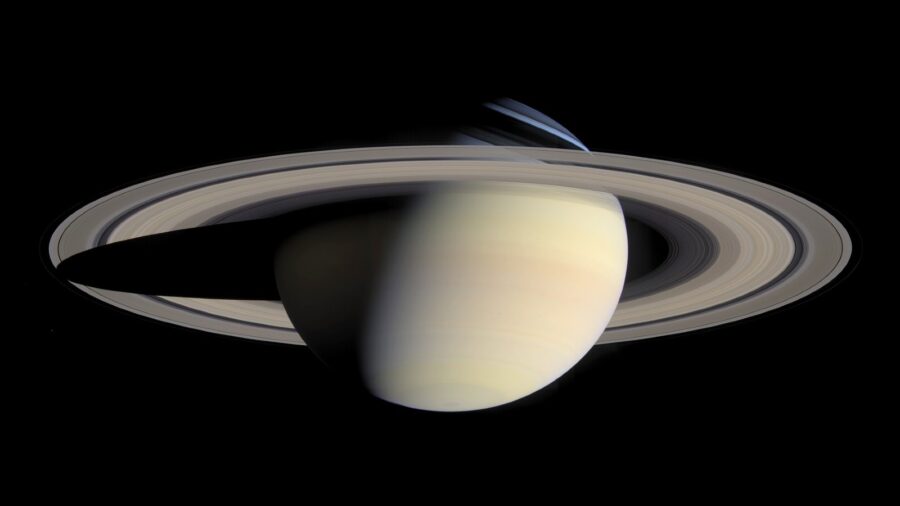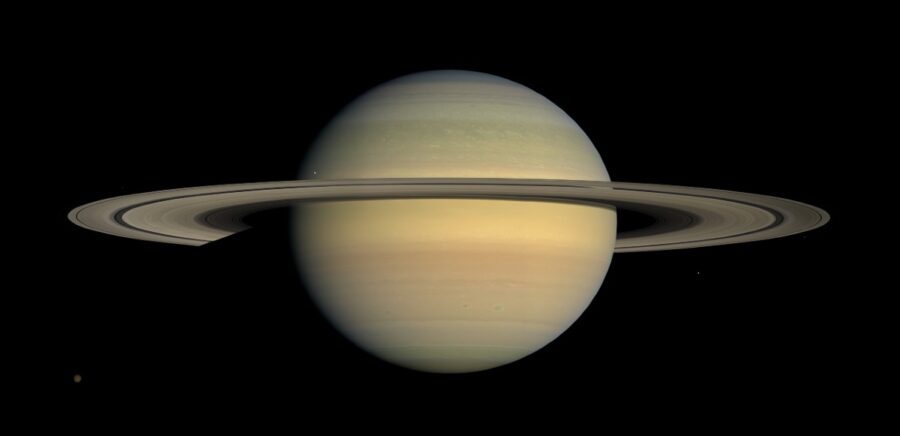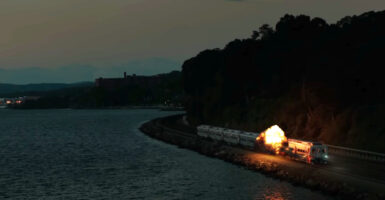We Now Know What Created Saturn’s Iconic Rings

According to Earth.com, the rings of Saturn might have formed after the Collision of two icy moons. Findings published in the astrophysical journal indicate that the rings might be what is left of a debris field from a few hundred million years ago following the two frozen bodies smashing into one another. Utilizing high-resolution simulations produced in a supercomputer, the research team that conducted the study learned that the Rings appear to be quite a bit younger than the planet.
For centuries, researchers have wondered how Saturn’s rings were formed, and now, thanks to a supercomputer, we know what happened.
From these same simulations, researchers were also able to devise a plausible cause for the formation of Saturn’s rings. Durham University’s Dr. Vincent Eke explains that the team tested the hypothesis to explain why the rings have formed more recently than the planet and found that such an impact would be capable of producing a sufficient amount of material to create the rings. In this hypothesis, the impact of the moons into one another would disperse both rock and ice, but the rock cores would not spread as widely, resulting in Saturn’s icy rings.
This makes sense, as data from the Cassini spacecraft showed Saturn’s rings to be composed almost entirely of ice with very little dust pollution. Cassini began orbiting Saturn in 2004 and did so for 13 years, providing a wealth of information as it moved through the area between the planet and its rings. Since the rings are composed mostly of ice, they are likely to have formed in the more recent period of the solar system’s history.
Some researchers have believed that Saturn’s rings formed along with the planet itself; the apparent difference in geologic age between the rings and the planet has posed a problem for that hypothesis.
This research into Saturn’s rings was a collaborative project between scientists at Glasgow University, Durham University, and NASA. The resolution used in their simulations is over 100 times greater than that of previous studies, allowing the various possible collisions to be studied in uncommon detail. Multiple models within the nearly 200 simulated impacts the team researched allowed for a sufficient amount of ice to fall into Saturn’s Roche limit, the orbital distance at which a planet’s gravity can break down larger pieces of ice and rock.

The moons of Saturn fall outside this Roche limit, which is why they did not break up to become part of the planet’s rings. Previous models have had difficulty explaining the quantity of ice in the rings, but this scenario solves that problem. Dr. Luis Teodoro from the University of Glasgow says that the relatively younger age of Saturn’s rings has been a mystery since the Voyager missions, meaning these new findings could answer some decades-old questions.
Multiple models within the nearly 200 simulated impacts the team researched allowed for a sufficient amount of ice to fall into Saturn’s Roche limit, the orbital distance at which a planet’s gravity can break down larger pieces of ice and rock.
Some researchers have believed that Saturn’s rings formed along with the planet itself; the apparent difference in geologic age between the rings and the planet has posed a problem for that hypothesis. This new research suggesting that the rings are the result of the collision of two icy moons provides a way of looking at Saturn’s rings that more fully accommodates the existing data. While the debate is sure to continue, as more research is conducted, scientists will learn more about this iconic planetary phenomenon.












